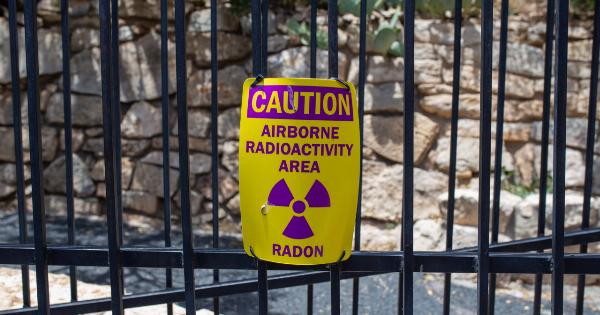Thyroid cancer is a type of cancer that affects the thyroid gland, a small gland located in the front of the neck. It is relatively rare compared to other types of cancer, but its incidence has been steadily increasing over the past few decades.
While the exact causes of thyroid cancer are still not fully understood, researchers have uncovered a surprising connection between dust and the development of this disease.
What is Thyroid Cancer?
Thyroid cancer occurs when abnormal cells in the thyroid gland start to grow uncontrollably, forming a tumor. The thyroid gland produces hormones that regulate metabolism and other vital functions in the body.
When cancer affects the thyroid, it can disrupt hormone production and lead to a range of symptoms, including fatigue, weight changes, and neck swelling.
The Rise in Thyroid Cancer Cases
Over the past few decades, the incidence of thyroid cancer has been on the rise. In fact, it is one of the fastest-growing cancers in terms of its prevalence.
While advancements in diagnostic techniques may contribute to this increase, researchers believe that there may be other environmental factors at play.
Dust: More Than Just Dirt
When we think of dust, we often associate it with dirt and household chores. However, dust is more than just a nuisance that requires regular cleaning.
It is a complex mixture of particles that can include everything from dead skin cells and pet dander to soil, pollen, and chemical residues.
The Link Between Dust and Thyroid Cancer
Studies have shown that certain types of dust can contain harmful substances known as carcinogens, which are substances that can cause cancer.
These carcinogens can be inhaled or ingested, and they have the potential to damage DNA and disrupt normal cell function.
One particular class of carcinogens found in dust is polycyclic aromatic hydrocarbons (PAHs). PAHs are produced by the burning of organic materials such as coal, oil, gas, or tobacco.
They can also be released into the environment through industrial processes, vehicle emissions, and even cooking meats at high temperatures.
When people are exposed to high levels of PAHs in dust, either through inhalation or ingestion, there is an increased risk of developing various types of cancer, including thyroid cancer.
PAHs can enter the body and accumulate in tissues, including the thyroid gland, where they can initiate cancerous changes in cells.
Household Dust and Thyroid Cancer
One surprising source of dust exposure is inside our own homes. Studies have found that household dust can contain significant levels of PAHs and other harmful substances.
This is particularly concerning because people spend a significant amount of time indoors, especially in urban areas where dust levels are higher.
Common sources of PAHs in household dust include tobacco smoke, cooking fumes, and outdoor air pollution. PAHs from these sources can settle onto surfaces and contribute to the overall dust in the house.
Regular activities such as vacuuming or sweeping can agitate the dust, causing it to become airborne and potentially inhaled.
Occupational Exposure to Dust
While household dust can be a significant source of exposure, certain occupations can also put individuals at an increased risk of dust-related illnesses, including thyroid cancer.
Some occupations that may involve exposure to dust and other potentially harmful substances include:.
- Construction workers
- Miners
- Welders
- Firefighters
- Factory workers
In these occupations, workers may be exposed to higher levels of dust on a regular basis, increasing their risk of developing thyroid cancer and other respiratory diseases.
Proper safety measures and the use of personal protective equipment are crucial in minimizing exposure and reducing the associated health risks.
Protecting Yourself from Dust Exposure
Reducing or eliminating exposure to dust in our environment can help lower the risk of developing thyroid cancer and other health conditions. Here are some tips to protect yourself from dust:.
- Keep your home clean: Regularly dust surfaces, vacuum carpets, and change air filters to reduce the amount of dust in your living environment.
- Use protective equipment: If you work in an occupation that involves exposure to dust, make sure to wear appropriate protective gear, such as masks, goggles, or gloves.
- Avoid smoking: Tobacco smoke contains numerous harmful substances, including PAHs. Quitting smoking or avoiding secondhand smoke can significantly reduce your exposure to these carcinogens.
- Cook with ventilation: When cooking, use a range hood or open windows to help remove cooking fumes and associated particles from your home.
- Stay informed: Stay updated on environmental pollution levels and take appropriate precautions, such as limiting outdoor activities on days with high pollution or dust levels.
Conclusion
The surprising connection between dust and thyroid cancer highlights the importance of understanding the potential health risks associated with our environment.
While dust may seem harmless, certain types can contain carcinogens that have been linked to the development of thyroid cancer. Minimizing exposure to dust through proper cleaning, protective measures in occupational settings, and lifestyle choices can help reduce the risk of developing thyroid cancer and promote overall well-being.






























